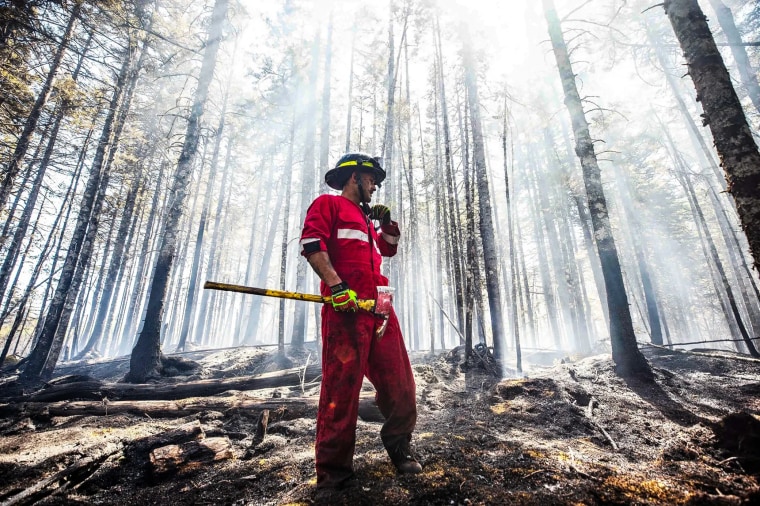By Denise Chow and Evan Bush - NBC News
Millions of people across the U.S. Midwest are under dangerous air quality conditions as smoke from wildfires in eastern Canada spreads over the region on Monday.
Fog has enveloped the sky across a wide swath of the country, from the Ohio Valley to the southern Carolinas. In southeastern Minnesota, parts of Michigan's Upper Peninsula and more than 60 Wisconsin counties put air quality advisories in effect starting Monday.
The increase in air pollution is due to the wildfires ravaging the Canadian provinces of Quebec and Nova Scotia.
[This is why wildfires in Canada impact air quality in the U.S.]
"A swath of smoke from the wildfires in Quebec will continue to persist across east-central and southeastern Minnesota today due to very light winds," the Minnesota Pollution Control Agency tweeted, adding that air quality should improve in the afternoon as thunderstorms help disperse smoke particles from the air.
Canada is experiencing one of the worst starts to the wildfire season ever recorded. More than 6.7 million acres in the country have already burned by 2023, federal officials reported last week.
A firefighter works to put out a fire in Nova Scotia, Canada.Government of Nova Scotia via AFP/Getty Images
Some 14,000 people had to be evacuated and more than 150 fires remain active in the province of Quebec, according to CBC News. Further east, in Nova Scotia, authorities said Sunday that one wildfire was under control, but that another, nearly 160 square kilometers, was still burning out of control, The Associated Press reported.
Smoke from the fires has spread across the northeastern United States and settled in the Midwest in recent days. Alerts were issued in all regions warning of high concentrations of air pollution, particularly for "sensitive groups" such as children, the elderly and patients with asthma and other respiratory conditions.
[Smoke from Canada's Huge Wildfires Affects Air in Areas Like New York]
Air pollution from wildfire smoke is a major health risk that has worsened in the United States. Researchers at Stanford University found that the number of people who lived at least one day with harmful air quality from smoke increased 27-fold in the past decade.
Small smoke particles smaller than 2.5 micrometers in diameter — about 4 percent of an average human hair — are of particular concern to air quality researchers.
"These particles are small enough to inhale and cause cardiovascular problems," said Brett Palm, a scientist at the National Center for Atmospheric Research in Boulder in Colorado.
This is why wildfires in Canada impact air quality in the U.S.
May 31, 202302:49
Exposure to this type of pollution can lead to inflammation and weaken the immune system, especially when the tiny particles penetrate the lungs and reach the bloodstream. It increases the risk of asthma, lung cancer or other chronic lung diseases, especially in vulnerable groups such as the elderly, pregnant women, infants and children. It could also increase the risk of respiratory illnesses and the increase in cases of COVID-19 and influenza.
The situation in the Midwest, according to Palm, highlights the long-term risks of wildfires, particularly as climate change creates hotter, drier conditions that increase the likelihood of them originating and intensify their severity.
"In the last decade, these fires have been increasing and increasingly have repercussions, not only where they originate, but also at a great distance in the direction of the wind," he said.
The Environmental Protection Agency, along with agencies such as the National Oceanic and Atmospheric Administration and NASA, maintains an interactive air quality data map called AirNow that allows users to see the location of active fires and assess local conditions and risks.

